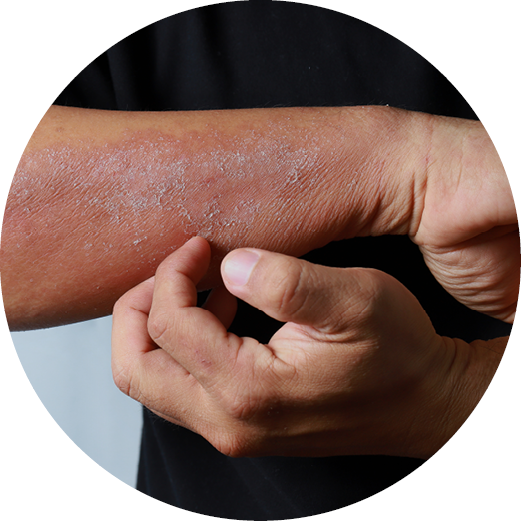Unpleasant cutaneous sensation that evokes the desire to scratch.
Usually, itch is a defense mechanism which is intended to eliminate environmental irritants.
Molecular Damage
In certain diseases, TRPV3 is out of balance, and leads to excess Ca⁺⁺ influx into the cells. The excess Ca⁺⁺ influx negatively impacts the structure of the skin due to an increase in keratinocytes (also called hyperkeratosis), inflammation and afferent nerve endings stimulation, increasing itch sensation.

Local Damage
Because of the increased sensation of itch, persons with these diseases often scratch the affected area, harming local tissue and further contributing to the cycle of chronic, debilitating itch.